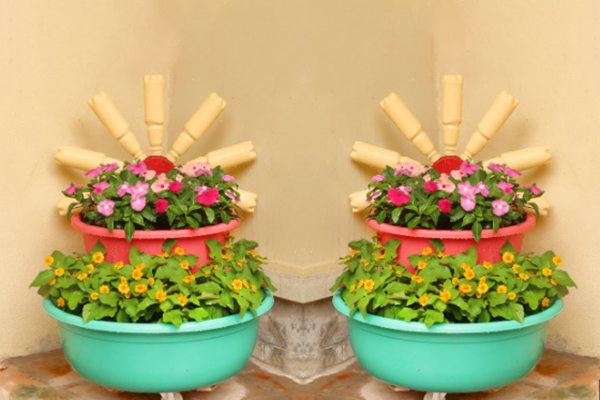As urban living spaces become smaller and gardening enthusiasts look for creative ways to grow plants, container gardening has taken center stage. Among the myriad options available for planters, plastic basins are a common household item that might prompt the question: Can you plant in a plastic basin?
The short answer is, yes, you can! Planting in a plastic basin is possible and can be highly effective with the right setup. Plastic basins provide an affordable, lightweight, and versatile option for growing various plants, from small herbs to decorative flowers and even vegetables. However, it’s important to understand how to properly prepare and use plastic basins for gardening purposes.
Why Choose a Plastic Basin for Gardening?
Plastic basins, typically used for laundry or dishwashing, might not come to mind immediately when thinking about gardening containers. Yet, they offer several advantages:
- Cost-effective: Plastic basins are often cheaper than traditional plant pots, making them an economical choice for gardeners.
- Lightweight: Compared to ceramic or concrete pots, plastic is far lighter, making it easy to move around, especially if you’re experimenting with the location of your plants to find the perfect sunlight conditions.
- Durable: Plastic basins tend to be durable and resistant to weather elements, particularly when placed in shaded areas. They don’t crack as easily as clay or ceramic pots.
- Versatile Sizes: Basins come in a variety of sizes, which can be handy for growing different kinds of plants, from shallow-rooted herbs to deep-rooted vegetables.
However, while plastic basins have these benefits, it’s crucial to prepare them correctly to ensure your plants grow well.
How to Prepare a Plastic Basin for Planting
A plastic basin is not designed as a planter, so there are some modifications you’ll need to make before using it for gardening. Here are a few key steps to consider:
1. Drill Drainage Holes
Proper drainage is essential for healthy plant growth. Most plants will suffer if their roots are sitting in water for long periods, which can lead to root rot. Since plastic basins are typically solid at the bottom, they won’t have any natural drainage holes. To remedy this, drill several small holes at the base of the basin to allow excess water to escape. Ideally, place a layer of gravel or small stones at the bottom to further facilitate drainage and prevent soil from blocking the holes.
2. Choose the Right Soil
The type of soil you use will vary depending on the plant species, but in general, it’s important to use a high-quality potting mix. Container plants often require more nutrients than plants in the ground, so you may need to enrich the soil with compost or fertilizers regularly. Additionally, make sure the soil mix is well-draining to prevent water from pooling inside the container.
3. Consider the Size of the Basin
The size of the basin will dictate what type of plants you can grow. Shallow basins are great for herbs, succulents, and small flowers, while deeper basins can be used for larger plants like tomatoes, peppers, or ornamental shrubs. Keep in mind that bigger basins require more soil and water, so they may need more frequent watering and feeding.
The Importance of Sunlight and Placement
Even though plastic basins are portable, you should carefully choose their placement based on the sunlight requirements of your plants. Most vegetables and flowering plants need at least 6-8 hours of sunlight daily while shade-loving plants will thrive in less direct light. Make sure to position your basin in a spot that meets the plant’s needs.
One point to note is that plastic tends to heat up quickly when exposed to direct sunlight. This can cause the soil to dry out faster, especially in warmer climates. Consider moving the basin to a shaded area during peak sunlight hours or using mulch to help retain soil moisture.
Environmental Considerations
One of the concerns people may have about using plastic containers for gardening is the environmental impact. Plastic can take hundreds of years to break down, contributing to environmental pollution. However, by repurposing old plastic basins, you are giving them a second life and reducing waste. Just make sure to avoid using basins made of toxic or low-quality plastic, as certain plastics can leach harmful chemicals into the soil over time, affecting plant growth.
If you’re concerned about sustainability, consider using BPA-free plastics or finding ways to recycle or upcycle your plastic containers once they’ve reached the end of their gardening life.
Conclusion: A Practical and Sustainable Solution
Planting in a plastic basin is not only feasible but also a practical and sustainable gardening solution. With the right preparation, such as adding drainage holes, using the proper soil mix, and ensuring good sunlight placement, a plastic basin can serve as a versatile container for growing a wide variety of plants.
Whether you’re limited in space or looking for a low-cost way to expand your garden, a simple plastic basin could be the answer. By making the most of what you have on hand, you can create a thriving garden while contributing to a more sustainable environment.
Post time: 10-18-2024




